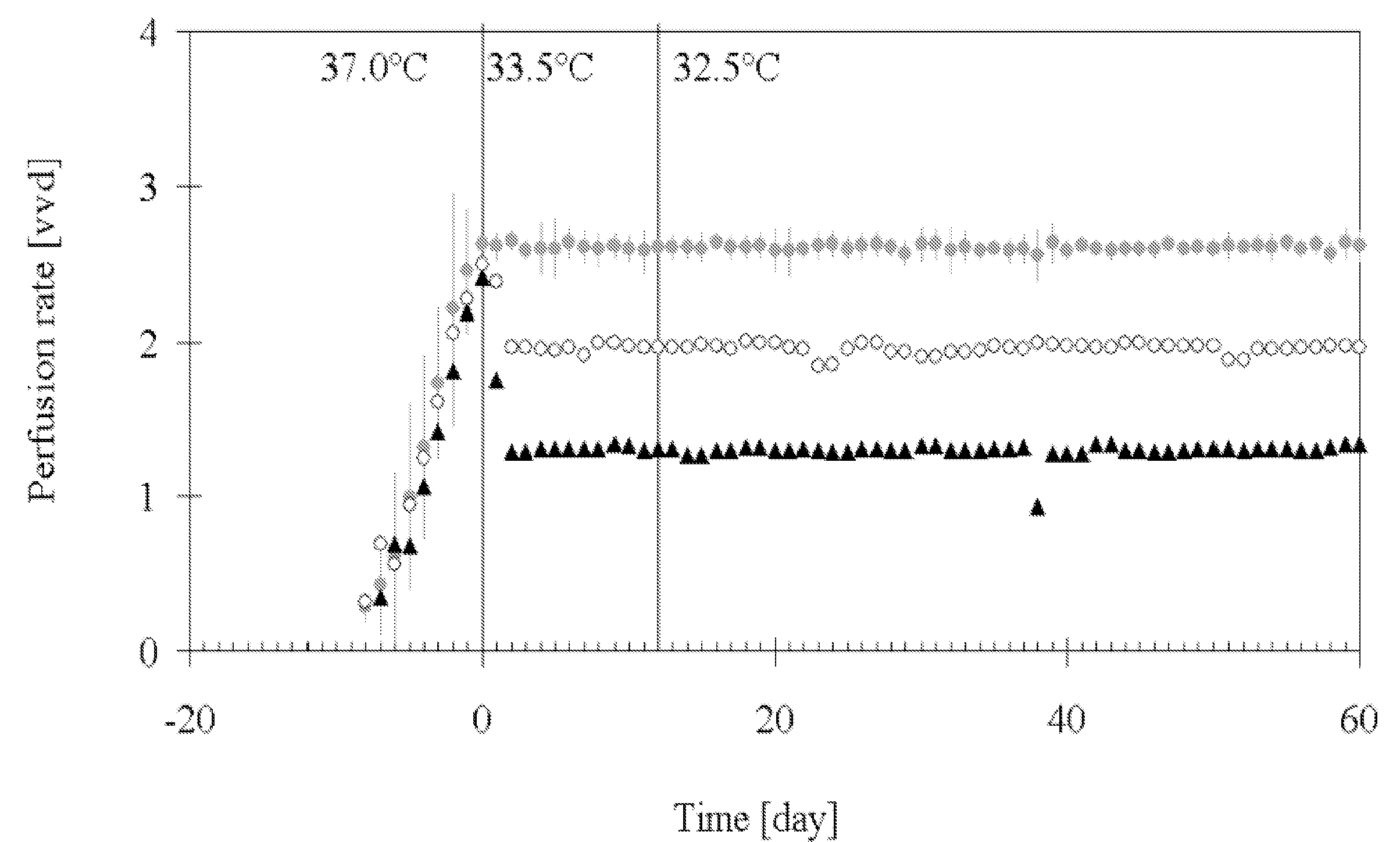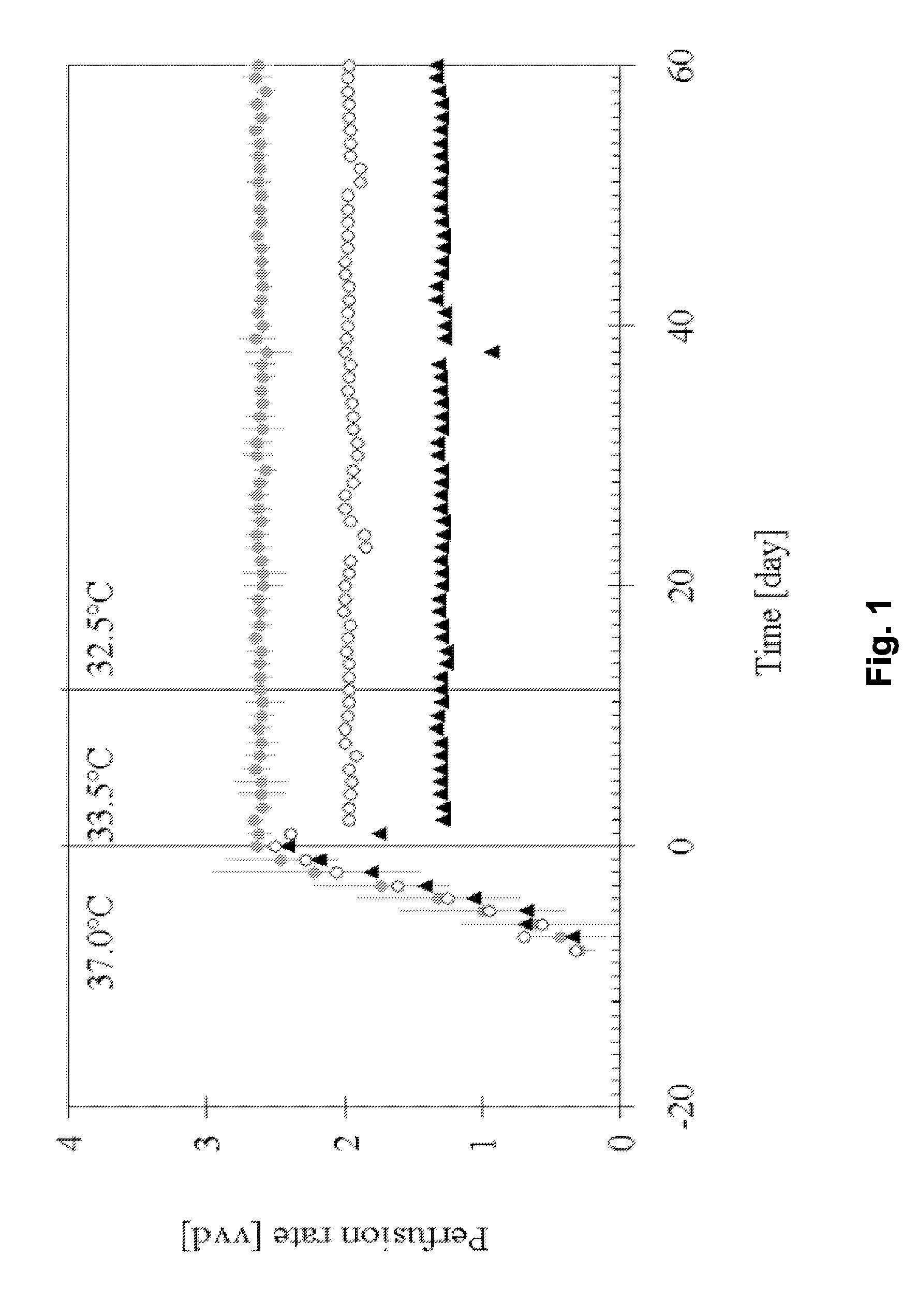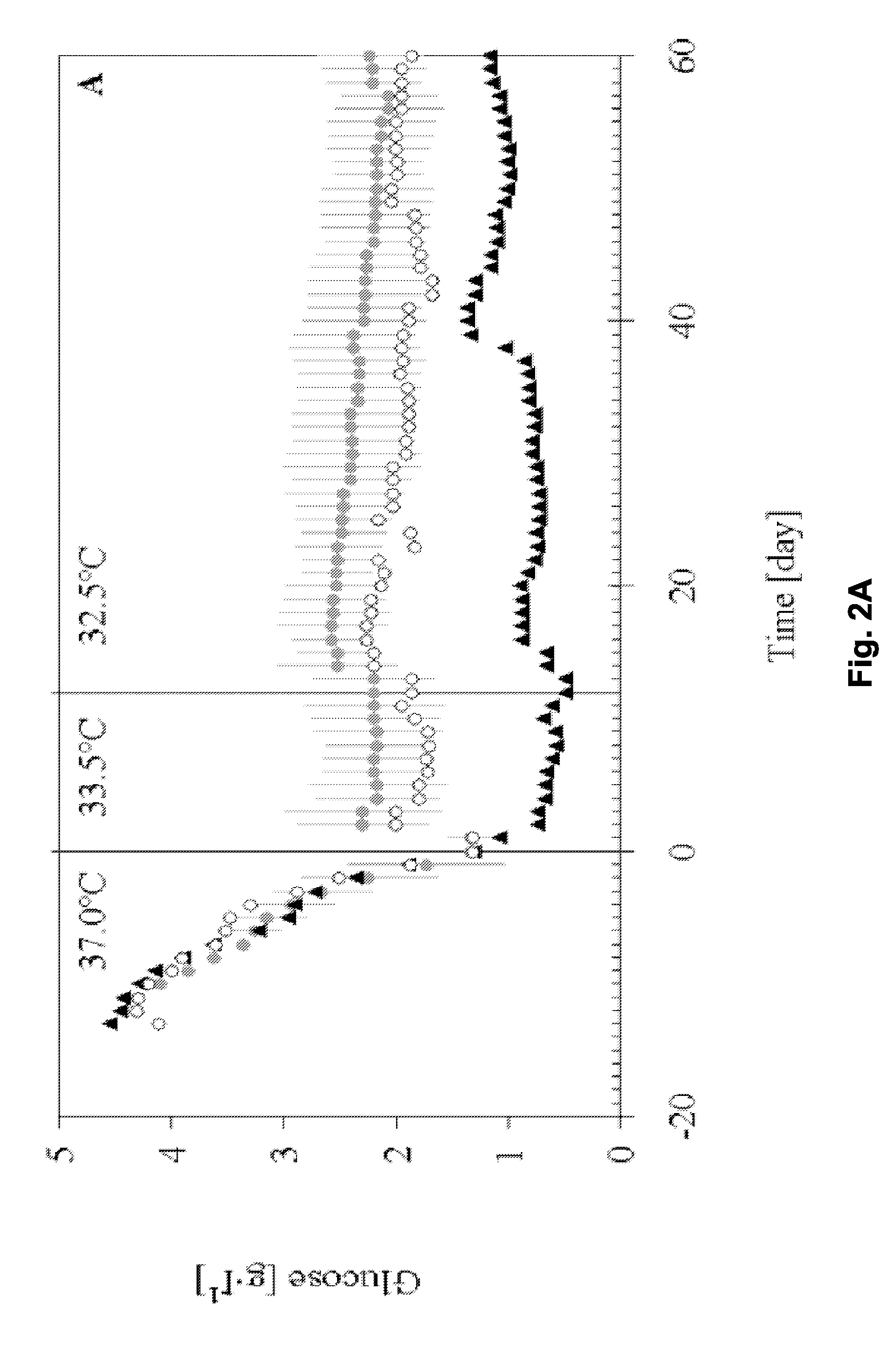Production of recombinant IL-18 binding protein
a technology of il18 binding protein and recombinant protein, which is applied in the field of protein production, can solve the problems of inability to achieve cost-effective and efficient process development, inability to control the perfusion rate, and overgrown culture, so as to reduce the perfusion rate and reduce the productivity of the recombinant protein product
- Summary
- Abstract
- Description
- Claims
- Application Information
AI Technical Summary
Benefits of technology
Problems solved by technology
Method used
Image
Examples
example 1
Perfusion Process for the Production of Recombinant, Human IL-18BP from Serum-free CHO Cell Harvest in Packed-bed Bioreactor
[0138]This example describes a process based on the high cell density culture of recombinant CHO cells in a packed-bed bioreactor, in which the perfusion rate was adjusted according to cell growth requirements during the growth phase and then pronouncedly reduced during the production phase without compromising process productivity or protein quality.
[0139]The protein product produced by this process, IL-18BP, was characterized and turned out to have an advantageous N-glycan-profile.
[0140]A first-generation process had originally been designed with the aim to rapidly produce material for pre-clinical and early clinical trials.
[0141]This process was designed with a high perfusion rate of 2.6 vvd in order to supply the high cell density (˜2.5·107 cell·ml−1 of packed-bed) with fresh medium during production phase. In this first-generation process, product degradat...
example 2
Fed-batch Process for the Production of Recombinant, Human IL-18BP from Serum-free CHO Cell Culture
[0196]A fed-batch process with recombinant human IL-18BP expressing cells in suspension culture was developed as well. Three runs were performed in total, using bioreactors of 5 L (n=2) or 300 L (n=1) nominal volume.
[0197]In summary, the culture set points were: oxygen concentration of 50% air saturation, pH 7.0 and 6.90, temperature of 37.0° C. during growth phase and then reduced in two steps down to 29.0° C. During the course of the fed-batch culture, the serum-free basal medium (Sigma, S-9942) was gradually supplemented with a concentrated feed solution.
[0198]The parameters of the fed-batch process are summarized in Table 3.
[0199]
TABLE 3Fed-batch Manufacturing process schemeTime / WD*TpHFeed[day][° C.][pHU]Feed-1Comments−3 Transfer the wave-bag inoculumVCs** = 0.20 ± 0.05pool to the seed bioreactor1)mioCs / mLwith a target VCs of:0Transfer the seed bioreactorVCs = 0.60 ± 0.10inoculum ...
example 3
Sialylation Profile of rhIL-18BP Produced in Perfusion and the Fed-batch Process for CHO Cell Culture
[0201]A further perfusion process for production of IL-18BP was set up. Perfusion runs were performed with a perfusion rate 2.75 vvd in a bioreactor containing a total volume of 160 L (including external column of 40 L) packed with 4.4 kg of Fibracel®-disks, at production temperatures of 33.5 or 32.5° C.
[0202]The IL-18BP produced in this perfusion process was compared to the material derived from the fed-batch process described in example 2.
[0203]Either perfusion or fed-batch supernatant were subjected to a capture step using affinity chromatography.
[0204]The post-capture IL-18BP material was analyzed for N-glycanation as described in Example 1 above.
[0205]The hypothetical charge number, the so-called Z-number, was calculated as described in Gervais et al. (2003). Briefly, the Z number is defined as the sum of the products of the respective areas (A) in the neutral, mono-, di-, tri-,...
PUM
| Property | Measurement | Unit |
|---|---|---|
| temperature | aaaaa | aaaaa |
| temperature | aaaaa | aaaaa |
| temperature | aaaaa | aaaaa |
Abstract
Description
Claims
Application Information
 Login to View More
Login to View More - R&D
- Intellectual Property
- Life Sciences
- Materials
- Tech Scout
- Unparalleled Data Quality
- Higher Quality Content
- 60% Fewer Hallucinations
Browse by: Latest US Patents, China's latest patents, Technical Efficacy Thesaurus, Application Domain, Technology Topic, Popular Technical Reports.
© 2025 PatSnap. All rights reserved.Legal|Privacy policy|Modern Slavery Act Transparency Statement|Sitemap|About US| Contact US: help@patsnap.com



